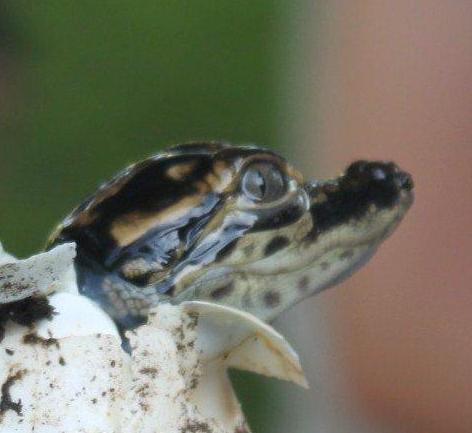|
Description - Head and body 2 1/2 - 4 inches (6.4 - 10 cm). Color is yellowish-brown
to olive -green on the back. Under parts are yellow.
Red spots are sometimes present on its sides. Head is small and the limbs are short with a
vertically compressed tail. Larvae may or may not develop into the land stage called an "EFT".
The eft stage may be maintained for 1 - 3 years. The eft form is red or orange and 1 3/8 - 3 3/8 inches
long with a rounded tip on its tail.
Habitat - Shallow water of forest ponds, ditches and slow moving streams, where dense vegetation
is present. The land stage eft is found in the forest floor often buried under vegetation or in rotten logs.
Breeding - Breeding occurs from February - April. The female lays up to 400 eggs in submerged
vegetation. The larvae hatch in 3 - 8 weeks. By late summer the larvae will transform either into the
eft stage, which live on land for 1-3 years before returning to the water as an adult, or develop
directly into aquatic adults.
Range in Texas - The Eastern Newt occurs in the eastern third of the State.
Notes - It feeds mostly on insects, worms, crustaceans and small amphibians. Its skin secretes
a toxic substance that protects it from most predators.
|




